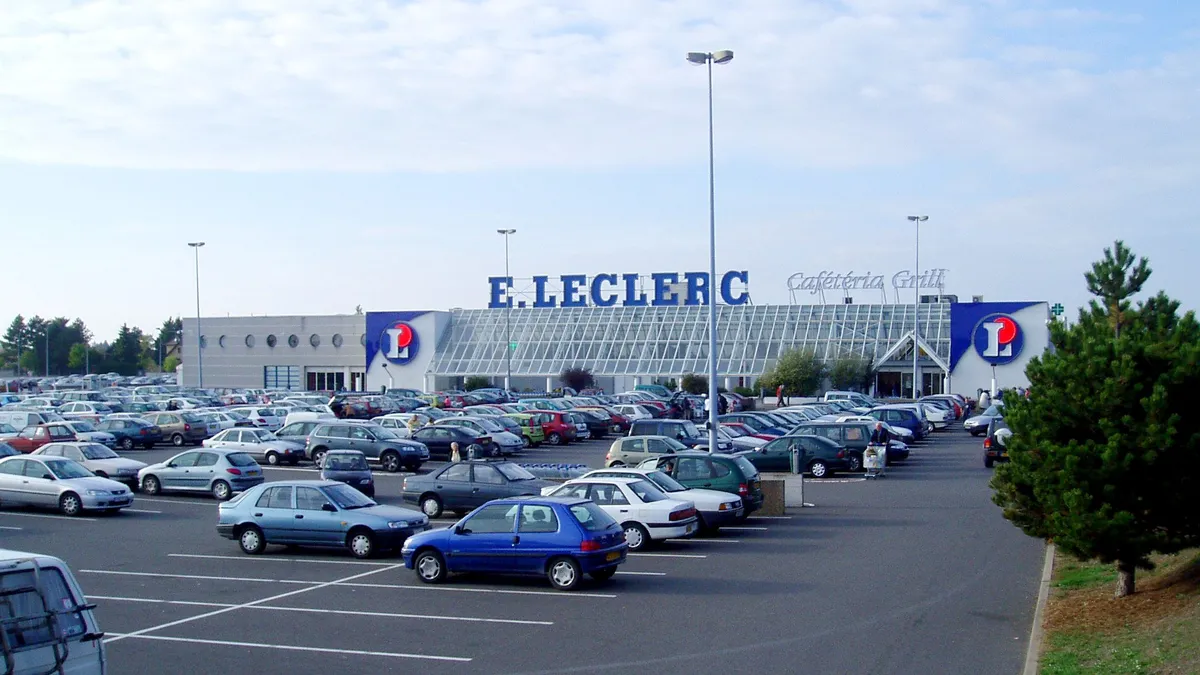Dive Brief:
- Drive, a click-and-collect model in France that’s been adopted by most major grocers and nearly a quarter of the country’s households, is a case study for the growth opportunities and challenges U.S grocers face in e-commerce, according to a report from Kantar Retail.
- The service, which began in 2002, grew slowly at first but expanded rapidly as grocers invested in the platform and made innovations to it. Grocer E. Leclerc has made Drive a core offering at its stores, more than half of which now beat the industry average of 3 to 4 million euros in yearly sales. Leclerc now accounts for nearly half of Drive’s market share in France and sees nearly 7% of its overall sales through the platform.
- Drive’s success offers some key takeaways for U.S. retailers, according to Kantar. These include focusing click-and-collect services on rural and suburban areas, offering convenient pickup locations and establishing a separate supply chain to fulfill orders rather than relying on stores.
Dive Insight:
Named after Chronodrive, the French company that developed the service, Drive follows a model that’s familiar to U.S. grocers and industry followers. Customers place their orders online, then drive to retail stores or pickup locations where workers will load groceries into their car. According to Kantar, Drive accounts for just over 5% of grocery sales in France, and stands to grow above 10% during the next decade.
It’s a model that’s similar to Walmart's curbside pickup and Kroger’s ClickList services. It also resembles AmazonFresh Pickup, the dedicated click-and-collect depots that opened in Seattle back in March.
So what’s so special about Drive? According to Kantar Retail, retailers have to look under the hood to see what makes the service significant and worth studying. Much like similar store pickup models in the U.S., Drive grew slowly at first. Once grocers started tinkering with the format and promoting it to customers, they saw sales increase rapidly. E. Leclerc, a leading French grocery chain, focused on improving service and speeding up order turnaround. It promoted its private label products, as well as made-to-order prepared foods through Drive, and saw the service expand while driving significant sales growth. Today, E. Leclerc sells around 7% of its products through Drive, and accounts for 47% of the market share among grocers that use the platform.
Drive’s growth — which hasn’t always gone smoothly — offers numerous lessons for U.S. retailers. According to Kantar, Drive users have learned that stores aren’t always the most convenient pickup points for shoppers. Kiosks and pickup centers have become convenient intermediary points. Likewise, companies have learned stores alone can’t meet e-commerce demand, and have had to establish separate supply chains. Drive providers also has found out the hard way that the pickup service works much better in rural and suburban areas than in urban markets.
These issues should sound familiar to U.S. grocers, many of whom are discovering limitations to using their stores as e-commerce fulfillment centers. As business grows, inventory and the store experience becomes strained, meaning grocers will need to consider dedicated facilities like fulfillment warehouses, pickup kiosks, dark stores — or all of the above.
In a recent interview with Food Dive, Diana Sheehan, Kantar Retail’s director of retail insights, said that just like in France, U.S. suburban markets stand to drive growth for click and collect operations. Home delivery, meanwhile, will likely work better in crowded urban markets.
Right now, Kroger and Walmart are two retailers closely following this model as they vie for e-commerce dominance. Numerous other retailers have implemented online shopping platforms, many through third-party services like InstaCart and Shipt. As Kantar points out, just 10% of all U.S. grocery stores offer online shopping — but the firm estimates the share of online food and alcohol sales is set to triple during the next five years to $55 billion by 2021.
Kantar notes grocers need to settle on a model for e-commerce, and France’s Drive could offer, if not an exact model, at least inspiration for future growth.









